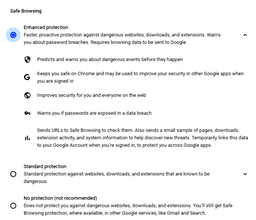6/10/2021
By Kevin Baker
Email phishing scams are rampant. And to help you avoid falling victim to one, I’m offering five easy to-dos.
1. Stay alert.
When it comes to defeating cybercrime, awareness is step number one.
While deceptive emails aren’t the first thing I think of each morning and I don’t want to promote paranoia, a healthy dose of skepticism isn’t such a bad thing.
Scams are constantly evolving and getting trickier all the time. Unfortunately, million-dollar breaches often begin with a couple naïve mouse clicks, and it’s not uncommon for email-enabled ransomware to shut businesses down cold — and keep them that way until ransoms are paid.
That’s why it’s important to keep an eye out for articles (like this one) that can help give you an edge on sniffing out “phishy” emails — especially when it comes to work emails.
Figure 1 Sample of a “phishy” email.
2. Beware of unconscious decisions.
Phishing uses email to manipulate your behavior.
Every day, most of us open scores, if not hundreds, of emails. It’s easy to get lulled into believing they’re all the same, they’re all safe. But if you begin unconsciously opening email, you’re primed for getting hooked — whether by a promise of gaining something valuable, which creates a sense of urgency, or by routine clicking on something that seems benign.
It’s fine to click on links when you’re on trusted sites. But clicking on links in random emails and instant messages isn’t such a smart move.
Instead, take a beat and weigh every decision to click with an ounce of caution. Hover over links you’re unsure of before clicking them. Does the URL that’s revealed by hovering over it with your mouse look like or align with what is shown in the email or web page?
Many phishing emails will start with “Dear Customer.” That salutation seems random and so, check to see if the rest of the email tries to lead you to believe they are speaking to you specifically? It’s good to be on the lookout and remember, a phishing email may claim to be from a legitimate company and when you click the link to the website, it may even look exactly like the real website. When in doubt, call the source rather than clicking a potentially dangerous link.
3. Turn on anti-phishing features.
If your browser has controls, turn them on. While there are no security guarantees, this should give you an additional layer of protection. You can get toolbars or plugins for browsers but be sure they come from a trusted source. If they are free, you may get what you pay for — nothing of much use. For the sake of maximizing security, it’s often better to buy well, cry once.
Figure 2 Security settings area from Chrome.
4. Create new passwords often.
Get into the habit of regularly changing your passwords and use multifactor (MFA) whenever possible.
It’s a good idea to use longer and more complex passwords, but at the processing speed of today’s computers, the only aspect of password management that will always work is a new password — and a truly new password, not one derived from your last one.
5. Don’t trust antivirus.
In fact, don’t trust any single security solution. There is no foolproof way to avoid phishing attacks, but rather, defense is built with layers.
The bottom line!
You don’t have to live in fear of phishing scams, but by keeping the preceding tips in mind, you should be able to enjoy a worry-free online experience.

